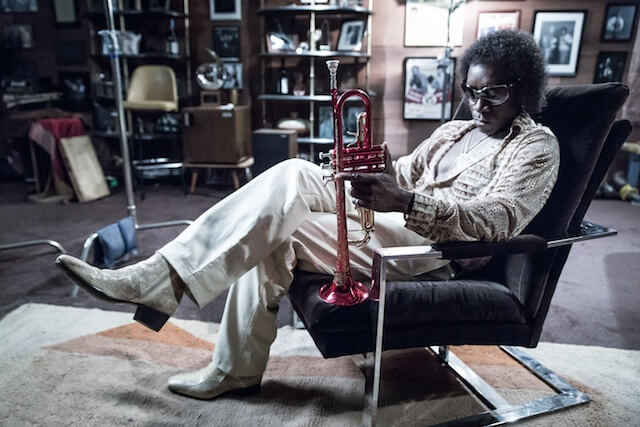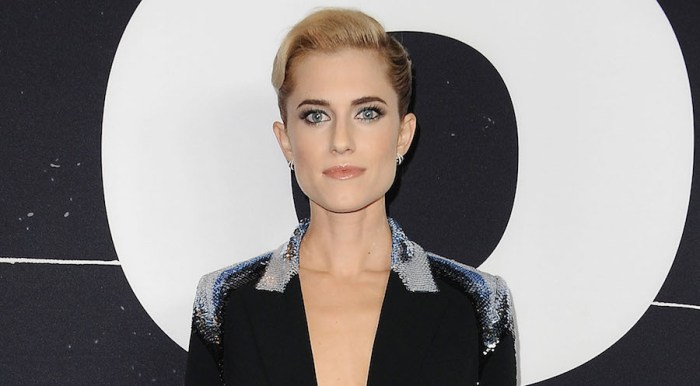For a prestigious film festival, the New York Film Festival is small. The curators are selective about what they include, seeking to create a carefully chosen batch of some of the most exciting, and often austere, new works. The fest, which begins on Sept. 25 and runs through Oct. 1, is still vast, as well as diverse. Here’s your guide, by category, on how to find the biggies, the less-biggies and the diamonds in the rough: RELATED: “99 Homes” offers an apocalyptic look at the house flipping industry The Majors
No fest could live without earthquaking, star-studded product, some of which will hit theaters soon after their splashy (and pricey) appearances. NYFF has itself three huge premieres. “The Walk,” Robert Zemeckis’ no doubt tricked out retelling of Philippe Petit’s World Trade Center stroll (already related in “Man on Wire,” but give Zemeckis the benefit of the doubt), is the opener. Don Cheadle’s delightfully nutso-sounding Miles Davis biopic “Miles Ahead” is the closer. In between there’s Steven Spielberg’s latest WWII romp, “Bridge of Spies,” which pairs Tom Hanks with the rightfully renowned theater god Mark Rylance in his hugest screen role yet. Among those that have already bowed elsewhere, “Steve Jobs” — not the recent, bland doc but the Aaron Sorkin-penned one with Michael Fassbender and Kate Winslet — is also on hand, as is Todd Hayne’s “Carol,” with Cate Blanchett falling for Rooney Mara in the 1950s. As far as movies with big names go, though, you ought to be most pumped for “The Lobster,” which rounds up Colin Farrell, Rachel Weisz, John C. Reilly, Ben Whishaw and more for some grim, crazy high concept fun. Director Yorgos Lanthimos debuted with “Dogtooth,” and his latest also explores people oppressed by insane oppressors. Here we get a world where those who are single, even widowed, are forced to pair off; if they don’t they’re turned into the animal of their choice. (Most choose dogs, but Farrell is gunning for a lobster.) It’s not so much a study of the social enforcement of love as a look at systems that so get their hooks in people they can’t shake them even when they break free. And it’s very funny (and very depressing). Mighty International Masters
Similarly, no fest could live without the latest from as many austere non-American legends as they can grab. This group makes up half of NYFF’s Main Slate, from the latest from Arnaud Desplechin (the memory piece “My Golden Days”), Jia Zhang-ke (“Mountains May Depart,” an almost “accessible” work from one of China’s frankest critics), Nanni Moretti (“Mia Madre,” featuring John Turturro), Chantal Akerman (“No Home Movie,” which kind of, sort of is, but not really), Philippe Garrel (“In the Shadow of Women”) and Romania’s Corneliu Porumboiu (“The Treasure”). Taiwanese minimalist Hou Hsiao-hsien even returns with “The Assasssin,” his first in seven years, and it’s (in a way) a kung-fu movie, albeit one more into long, languorous takes than ass-kicking. RELATED: “Sicario” portrays the drug war as a club for frat boy psychos Thailand’s Apichatpong Weerasethakul is also back after a bit of a hiatus. His “Cemetery of Splendor” is his first full-on feature since 2010’s “Uncle Boonmee Who Can Recall His Past Lives” (following many shorts and the medium-length “Mekong Hotel”) and it’s another gentle, hypnotic, playful look at reincarnation and dreams, filled with ghosts casually hobnobbing among the living and warming, neon “dream tubes.” In a way it’s more of the same, but different, which also explains Hong Sang-soo’s “Right Now, Wrong Then,” from someone who really does like to repeat himself. Here again we have a traveling filmmaker wrestling with love (or at least lust), told in segments that repeat themselves with subtle, and not so subtle, differences, plus fountains of soju. It’s difficult to say what makes this noticeably top-notch, except that Hong is more precise than he usually is, exploring how characters’ moods affect their romantic advances. The biggest title, by sheer size and especially ambition, is “Arabian Nights,” a three-part, six-and-a-half hour behemoth from Miguel Gomes, last seen at NYFF with the more compact “Tabu.” Allegedly it’s semi-inspired by Scheherazade’s tales, and allegedly it concerns the economic catastrophe that gripped Portugal last year as he made it. But Gomes’ approach is more loose and not easily contained by restrictive rigor. Some are straight-out tales, some are mere observations, and some are something else entirely. It’s by turns angry and bemused, and Gomes has enough of a sense of humor to devote most of the final 90 minutes to everything you never wanted to know about chaffinches but were not afraid to ask — a hilarious move that contrasts with its more sober studies of the widening class gap. More Local-ish Masters
North America has some great filmmakers too, don’t ya know? Canada’s Guy Maddin’s “The Forbidden Room” is his first “classic” style Maddin — that is, filled with retro style and gags — in ages, and you can tell: it’s stocked silly with jokes and rampant absurdity, overflowing with zeppelins, volcanoes, squid theft, “offal piling” as well as stars like Mathieu Amalric, Charlotte Rampling and Udo Kier. Michel Gondry often works this side of the Atlantic, but he’s back in France for “Microbe & Gasoline,” which, like “The We and the I,” hangs with kids. Rebecca Miller, daughter of Arthur, tries her hand at Noah Baumbachian comedy with “Maggie’s Plan,” which borrows Greta Gerwig. And Michael Moore does his thing, if you’re into it, with “Where to Invade Next.” Michael Almereyda doesn’t have quite the cultural cachet of any of these, but he’s a restlessly experimental talent who still technically works within narrative film. (He’s modernized Shakespeare twice, with the sharp, funny Ethan Hawke “Hamlet” and, recently, the “Sons of Anarchy”-ization of “Coriolanus.”) “Experimenter,” like this summer’s “The Stanford Prison Experiment,” dwells on noted, and hotly contested, old psychological experiments, namely ones done by Stanley Milgram (Peter Sarsgaard), a cold bastard who explains his oeuvre, sometimes to the camera, with a sick cockiness. It doesn’t come down hard on either the veracity of his work or him as a person, content to create a dense space for heady ideas, as well as Sarsgaard’s best work since “Shattered Glass.” Documentaries
No matter how you feel about non-fiction being relegated to their own section, NYFF’s doc sidebar still has some must-haves. Laura Poitras chases “Citizenfour” with a segment in“Field of Vision,” a compilation of short docs. Hers is a three-minute glimpse of Julian Assange. Laurie Anderson takes to film with “The Heart of a Dog,” which is ostensibly about when her man’s best friend died, but mostly uses it as a jumping off point to ruminate on mortality, changing New York and, well, you know, 9/11. Though not technically part of the doc section, Noah Baumbach’s “De Palma” does offer a filmmaker-on-filmmaker look on one of the most hotly-contested directors, with an insightful use of clips. (Yes, the “Be Black, Baby” section from “Hi Mom!” is accounted for.) RELATED: Our interview with Frederick Wiseman for “National Gallery” The hottest ticket, though, should be “In Jackson Heights,” the 40th-or-so film from Frederick Wiseman, one of the genre’s true pioneers. Wiseman is in his 80s, yet he still cranks out on average a film a year, each an abstract, mysterious and perceptive look at institutions or, in this case, a community. Here, he drops into the Queens neighborhood to root around in a rich multicultural enclave inside a city that’s increasingly whitewashed and moneyed. Even if it’s not as towering as last year’s Wiseman, “National Gallery,” even second-rate him is a godsend. The Avant-Garde
Once called “Views from the Avant-Garde,” the experimental film section now boasts the fuzzier name “Projections,” though it still offers the usual latest from a grab-bag of established greats and newbies, plus the odd revival (including, this year, Chick Strand’s “Soft Fiction.” Among the names showing off their latest are Peggy Ahwesh, Lewis Klahr, Peter Tscherkassky, Bens Russell and Rivers and the great, lovable Jodie Mack, who this time adds live action to her usual old school animation shtick. Revivals
There’s no major retro on a single filmmaker this year, but there is a celebration of The Film Foundation, Martin Scorsese’s collective, which uses his name to remind the masses (or some of them) that film preservation is important. Among the wares are Ousmane Sembene’s debut film, “Black Girl,” Ernst Lubitsch’s last film, “Heaven Can Wait,” John Ford’s sometimes forgotten “The Long Voyage Home” and Luchino Visconti’s blistering “Rocco and His Brothers.” Elsewhere, Baumbach’s “De Palma” yields a screening of his possible best film, “Blow Out,” a ’70s paranoia thriller for the ’80s, Akira Kurosawa’s colorful, bloody “Ran” and King Hu’s kung-fu epic “A Touch of Zen,” which features, among other delights, the best jumping in cinema history. The New York Film Festival runs from Sept. 25 through Oct. 11. For the full schedule, lineup and tickets, visit the NYFF site.
Your handy guide to doing the 2015 New York Film Festival

NYFF
We will have running coverage of the films itself as the festival is underway. Please check back for updates.
Follow Matt Prigge on Twitter @mattprigge


















